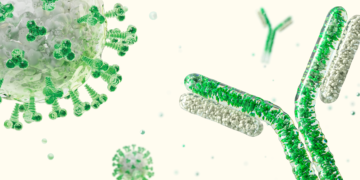
Measure Neutralizing Antibodies against Any SARS-CoV-2 Variant in 1 Day
Current vaccines against severe acute respiratory syndrome coronavirus 2 (SARS-CoV-2) have reduced the severity of the coronavirus disease 2019 (COVID-19). However, the drastic and quick evolution of the virus poses challenges to the development of durable and efficacious therapeutics for vaccine and antibody developers alike. See how the Bio-Plex Pro Human SARS-CoV-2 Neutralization Antibody Custom Assay Developer Kit speeds up the qualitative measurement of neutralizing antibodies (NAbs) against new SARS-CoV-2 variants, removing a roadblock in COVID-19 therapeutic development.

A Pioneering Approach to Biotherapeutic Antibody Discovery
Immunotherapy has revolutionized cancer treatment, yet the drug discovery process to develop new biotherapeutic antibodies remains arduous. However, significant advances in antibody technology such as phage display have enabled fully human antibodies to be developed from animal-free libraries for just about any antigen.

Maximizing the Impact of Wastewater-Based Epidemiology with ddPCR Technology
As SARS-CoV-2 becomes an endemic agent worldwide, communities and health agencies must figure out how to identify novel variants and track infection rates in ways that are sustainable, sensitive, and accurate. Fortunately, wastewater-based epidemiology (WBE) has proven its ability to play an important role in monitoring COVID-19 outbreaks, and Droplet Digital PCR (ddPCR) has become a cornerstone method for ongoing wastewater-based disease surveillance. In this article, we review the role of wastewater-based testing in community health before, during, and beyond the COVID-19 pandemic, and we explore why ddPCR technology is ideally suited for this application as it continues to expand and evolve.

Using ddPCR Technology to Improve Cancer Detection and Treatment Efficacy Monitoring
Cancer remains a leading cause of death worldwide. However, as cancer treatments continue to improve and diagnoses happen sooner, more and more patients are experiencing remission. To further increase survival rates and reduce unnecessary treatment, scientists and clinicians are turning to ultra-sensitive molecular analysis to inform treatment decisions and predict and detect relapse.
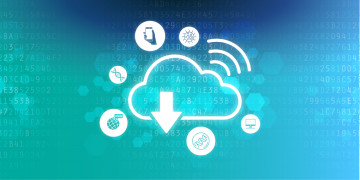
Connected Instruments in the Digital Laboratory
As technology advances, a digital transformation has begun in laboratories around the world. Driven by the need to improve data quality and increase the value derived from the investment in generating those data, data management systems, devices, and their workflows are becoming more connected and integrated, ushering in the age of the digital laboratory. The digital laboratory is one where paper lab notebooks are replaced with fully digital data, complete with rich metadata, and generated using integrated workflows. Such data are easy to find, reuse, and reproduce. Further digitization and workflow integration to operate laboratory instruments will advance the burgeoning digital laboratory.
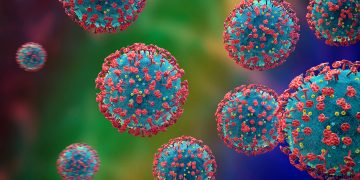
Single-Step Influenza Virus Purification Using an Anion Exchange Resin
A new and simplified anion exchange chromatographic process for the purification of both live and inactivated cell grown H1N1 influenza viruses was established with a recently developed anion exchanger. The resin is designed with an optimized surface extender and pore size for superior accessibility and large biomolecule binding capacity, aiming to overcome common drawbacks of existing ion exchangers for virus purification.

Leading the Way in Our Understanding of COVID-19: Peptide Megapool Assays
Understanding how T cells respond to severe acute respiratory syndrome coronavirus 2 (SARS-CoV-2) is critical in developing long-term therapeutic approaches, as well as helping inform strategies for future pandemics. Learn how one team at the La Jolla Institute for Immunology in San Diego, California, has been using novel T-cell activation assays to understand how our immune system responds to SARS-CoV-2.

Across the Blot: A Western Blotting Crossword
Do you think you know western blotting? Test your knowledge with a crossword puzzle.
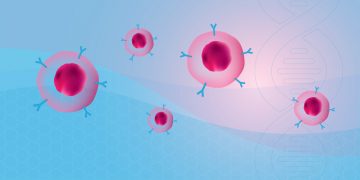
Precise Cell and Gene Therapy Potency Quantification
Inadequate quality control assays shouldn’t limit cell and gene therapy applications. Instead, quantifying the potency of cell and gene therapies is essential for successful therapeutics. In this article, we describe multiple leading potency assays developed using Droplet Digital PCR (ddPCR) technology, including an assay that quantifies transgene integration and expression in one step.
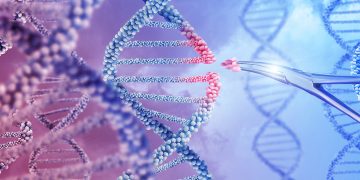
Modernizing Gene Editing Detection with Droplet Digital PCR
Gene editing is only useful if it’s successful. Read how scientists are leveraging the unparalleled accuracy and specificity of ddPCR technology to optimize quality control in gene editing projects, including HIV detection and CAR-T cell generation.
